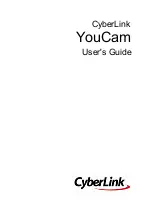
LAN Adapter Support, Universal Serial Bus (USB) Ethernet Support Device Driver.
©2003, Jonas Buys.
JBHWIS00001.
www.os2warp.be
a.
Double-clicking the USBETHER.EXE file object, when you’re nor
working in command-line interface (CLI). The three files will be
created in the same directory or folder the USBETHER.EXE file is in.
b.
Or you can open an OS/2 windows, change the active directory to the
directory where the USBETHER.EXE file is stored, and the typing
usbether
at the OS/2 command prompt, followed by pressing the
ENTER
button on your keyboard.
Once the USBETHER.EXE file is expanded, please continue with the USB
Installation Instructions.
3.
Open MPTS - Network Adapters and Protocol Services (click right mouse
button on desktop, select
System Setup
menu, double click on MPTS icon
in System Setup window). Next, press the
Configure
button.
Select
LAN adapter and protocols
and press
Configure
button.
Press
Other adapters
button. Specify a path to the USB Ethernet adapter
driver files (use default path A: if the files were copied to floppy disk in
drive A:). Finally, press
OK
. If the path was correct, and the files were
found, they will now be copied to your hard disk automatically.
4.
After the driver and configuration file(s) have been copied to your hard
disk, you must add the driver to your configuration in MPTS.
5.
See FIGURE1. In the
Network Adapters
field, select the
USB ETHeRnet
Adapter
. Click the
Add
button below the field. Now the driver will appear I
the
Current Configuration
field.
6.
Now the most important part: you must specify the Vendor ID and the
Device ID for your network card. These hexadecimal specifications can be
found in the section
Listing of tested USB Ethernet Adapters
, to be
found later in this document. If you are using the 3COM USB Network
Interface 3C19250, then you shouldn’t change these IDs, and you should
skip this step of installation.
How should you do this? Select
USB ETHeRnet Adapter
listed in the
Current Configuration
field, and click the
Edit
button. That causes a


































